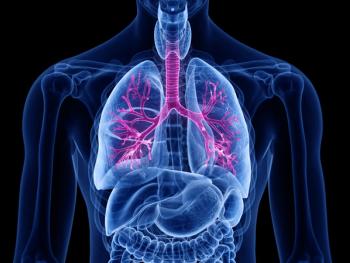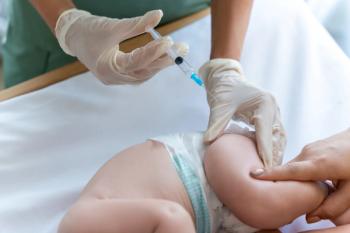
Asthma Diagnoses Among Children Halved During COVID-19 Pandemic
Masking, social distancing, and school closures all contributed to children being exposed to fewer environmental triggers of asthma.
People with
The Asthma and Allergy Foundation of America (AAFA) state1 that approximately 4.8 million children in the US have asthma, with symptoms including breathing difficulty, wheezing, coughing, and tightness or pain in the chest. Asthma is manageable, but AAFA estimate that 50% of children with asthma have uncontrolled asthma.
A new study2, led by Rutgers University investigators and published in Respiratory Research, examined the rate of new asthma diagnoses in children during the first year of the COVID-19 pandemic in the United States. This research was largely inspired by a Japanese study3, which found the COVID-19 pandemic was associated with a reduction in
Investigators from Rutgers Biomedical and Health Sciences conducted a retrospective cohort study, utilizing the Health Core Integrated Research Database to identify children under 18 years of age with no prior diagnosis of asthma. The rates of new asthma diagnoses from 2020 were compared to those from the previous 3 years.
Incident asthma was defined with a combination of diagnosis codes, location of services, and medication dispensing. The investigators calculated the crude quarterly rates of asthma diagnosis per 1000 children. Using negative binomial regression, adjusted for age, sex, region, and season, the incidence rate ratio and 95% confidence interval were estimated newly diagnosed asthma before versus during the pandemic.
The investigators found that compared to the 3 years preceding the COVID-19 pandemic, crude incident diagnosis rates of asthma decreased by 52% during the first 4 quarters of the US pandemic (2020).
The pandemic certainly disrupted typical health care access, but the investigators hypothesized that COVID-19 prevention practices such as masking, social distancing, and school closures lowered children’s exposures to circulating respiratory viruses and other environmental triggers.
“These findings raise important questions whether pandemic-related changes in infectious or other triggers truly altered the incidence of childhood asthma beyond the well-described disruptions in health care access,” the study authors concluded. “Research on disease etiology and more recent diagnostic trends and clinical outcomes of asthma will help answer these questions.”
References
1. Asthma Facts and Figures. AAFA. April, 2022. Updated March, 2023. Accessed April 4, 2023. https://aafa.org/asthma/asthma-facts/
2. Horton, D.B., Neikirk, A.L., Yang, Y. et al. Childhood asthma diagnoses declined during the COVID-19 pandemic in the United States. Respir Res. March 10, 2023. Accessed April 4, 2023. https://doi.org/10.1186/s12931-023-02377-7
3. Matsumoto N, MD, PhDa. Kadowaki T, MPHb. Takanaga A, MHIMb. Ikeda M, MD, PhDc. Yorifuji T, MD, PhD. Impact of COVID-19 pandemic-associated reduction in respiratory viral infections on childhood asthma onset in Japan. The Journal of Allergy and Clinical Immunology. September 26, 2022. Accessed April 4, 2023. DOI:https://doi.org/10.1016/j.jaip.2022.09.024
Newsletter
Pharmacy practice is always changing. Stay ahead of the curve with the Drug Topics newsletter and get the latest drug information, industry trends, and patient care tips.













































































































































































































